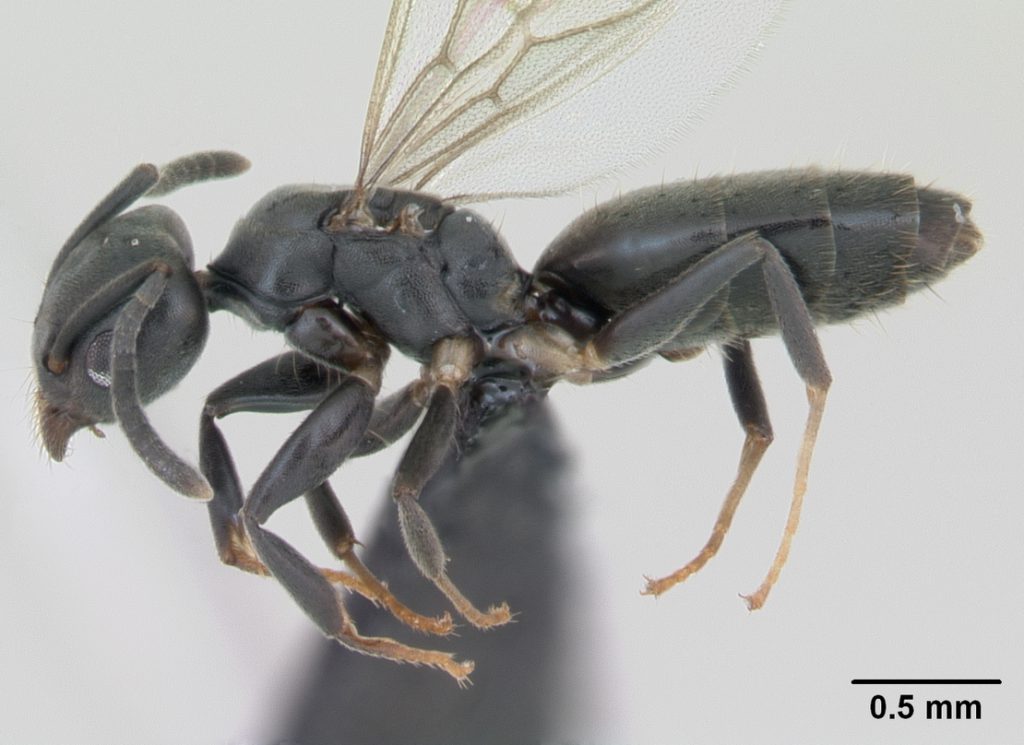SERVICE REQUEST?
Fill out the form below.
Find our nearest location
Your Local Office

White-footed Ant
Attribution: April Nobile / © AntWeb.org / CC-BY–SA-3.0
Size:
About 1/8-inch long.
Color:
Black, with pale tarsal segments at the end of all six legs, giving it its name.
Behavior:
White-footed ants may develop huge colonies containing thousands of workers and numerous queens. A colony of white-footed ants can number up to one million individuals. This species may be difficult to control and does not feed much on ant baits. The keys to control are to find the colonies and subcolonies and treat them directly. Regular inspections and service are necessary to find and treat new colonies as they move from neighboring properties. The services of a professional, such as Terminix, are very helpful when encountering these ants.
The white-footed ant is a serious pest in southern Florida and on the Hawaiian Island of Oahu. These ants nest outdoors under items on the ground, within landscape mulch, beneath loose bark on trees, under ground cover, in potted plants, and within piles of items, such as lumber, firewood, or bricks. Nests may also be readily established inside homes in walls, beneath carpeting, and in other suitable voids or spaces.
The white-footed ant may well be the most difficult to control of all structure-infesting ants. In many situations elimination of ant activity is nearly impossible, especially during mid-summer in areas where this ant occurs (Florida and Hawaii). At best, regular treatments hold the ants at bay, keeping as few ants as possible from entering the home or business. Without such efforts, however, the numbers of ants seen inside can rise into the thousands. Regular pest control services by an experienced Terminix professional can help minimize the numbers of ants seen inside. It is especially important to seal as many cracks in the homes exterior as possible to exclude ants and other pests. General tips for limiting ant infestations include:
- Eliminate piles of lumber, bricks, or other debris that could serve as a nesting site for ants.
- Keep landscape mulch less than 2 inches thick and at least 12 inches away from foundations.
- Ensure the sprinkler system does not spray directly onto a building’s foundation.
Family Name:
Technomyrmex albipes
Read What Our Clients
Are Saying
My Terminix tech Scott is the best! He is professional, courteous and absolutely thorough about his job. Thank you for sending such a blessed tech to my house. Hamlet, NC
This letter is to say how pleased we are here at Morreene West Apartments with your services. We are very pleased with the technician, Christopher. He does a great job. Durham, NC
Terminix has consistently offered our apartment complex reliable, competent service. We are completely satisfied with their knowledgeable representative who is always punctual and does a superior job for us every time. Chapel Hill, NC
I would like to take the time to thank you for giving us such great service here at Carver Pond Apartments. Your Pest Technician Christopher Mitchell has provided us with excellent service over the last few months. Christopher is such a great help to us in providing helpful information so that we can better serve our residents here at Carver Pond. Durham, NC
SERVICE REQUEST?
Fill out the form below.